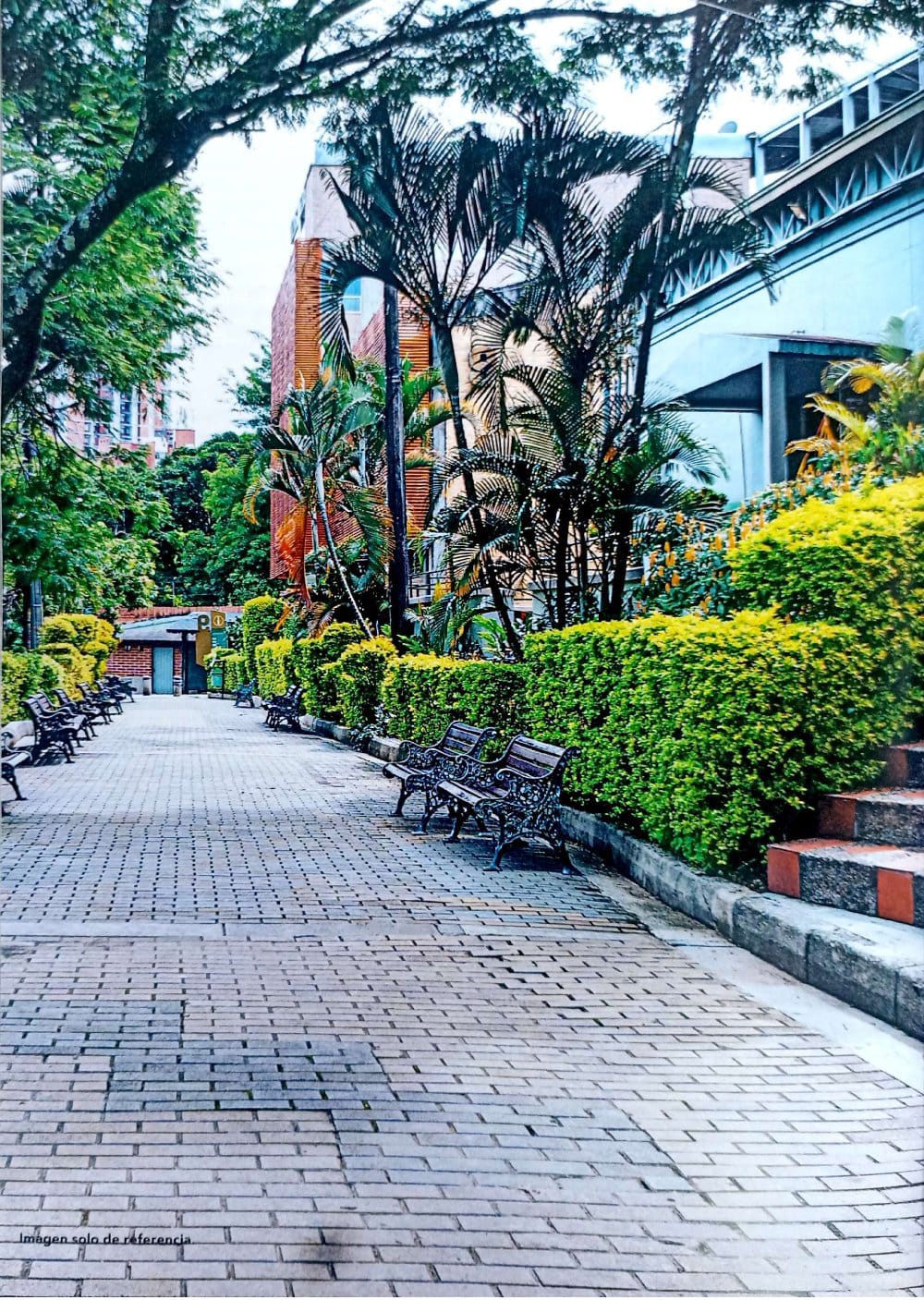Evaluación de las propiedades físicoquímicas de los efluentes de Mozambique Sugar Company
Evaluation of the Physicochemical Properties of Effluents from Mozambique Sugar Company
Contenido principal del artículo
Resumen
Las aguas residuales de las industrias azucareras presentan características complejas y su tratamiento constituye un desafío para los ingenieros ambientales, especialmente en lo referente a su reutilización. El principal objetivo de este estudio es determinar las características fisicoquímicas de las aguas residuales generadas por la Açucareira de Moçambique. La elección de esta industria se justifica por los altos volúmenes de agua que uti liza en sus procesos productivos (alrededor de 900 1 m3/h), así como por la necesidad de adoptar un modelo adecuado de gestión de efluentes. Para ello, se recolectaron muestras durante un periodo de seis meses, con una frecuencia bimensual, y se analizaron parámetros físicos y químicos. Los resultados obtenidos se compararon con los valores establecidos en el Decreto nº 18/2004, vigente en Mozambique, y con las estimaciones del Banco Mundial reportadas en diversos artículos científicos. Debido a estos resultados, fue posible confirmar el método más adecuado para estos efluentes de manera ambientalmente más sostenible.
Descargas
Datos de publicación
Perfil evaluadores/as N/D
Declaraciones de autoría
- Sociedad académica
- Tecnológico de Antioquia
- Editorial
- Tecnológico de Antioquia - Institución Universitaria
Detalles del artículo
Referencias (VER)
. K. Pradeep, S. Omprakash, “Quality and management of wastewater in sugar industry”, Water Sci. Vol. 7, pp. 461-468, 2014. DOI: https://doi.org/10.1007/s13201-015-0264-4
. A. Marszalek and E. Puszczalo, “Effect of Photooxidation on nanofiltration membrane fouling during wastewater treatment from the confectionary Industry”, Water, vol. 12, n° 3, 793, 2020. doi: 3390/w12030793/ DOI: https://doi.org/10.3390/w12030793
. S. i. Abou-Elela, F. A. Nasr, S. A. El-Shafai, “Wastewater management in small- and medium-size enterprises: Case studies”, Environmentalist Systems and Decisions, vol 28, PP. 289-296, 2008. doi: 10.1007/s10669-007-9142-4 DOI: https://doi.org/10.1007/s10669-007-9142-4
. H. Ozgun, N. Karagul, R. K. Dereli, M. E. Ersahin, T. Coskuner, D. I. Ciftci, I. Ozturk, M. Altinbas, “Confectionery industry: a case study on treatability-based effluent characterisation and treatment system performance”, Water Sci. Technol. Vol. 66, pp. 15-20, 2012. doi: 10.2166/wst.2012.094. DOI: https://doi.org/10.2166/wst.2012.094
. O.P. Sahu, P. K. Chaudhari, “Electrochemical treatment of sugar industry wastewater: COD and colour removal”, Journal of Electroanalytical. Chem., vol. 739, pp. 122-129, 2015. DOI: https://doi.org/10.1016/j.jelechem.2014.11.037
. A. F. D. Yotamo, “Energy Balance of Boilers and Steam Lines”, Monograph, 2009.
. E.C. Marques, “Efficient Steam Generation from Bagasse”, Internship Report, 2014.
. A. Nouhou Moussa, B. Sawadogo, Y. Konate, S. Sadio Sidibe y M. Heran, “Critical State of the Art of Sugarcane Industry Wastewater Treatment Technologies and Perspectives for Sustainability”, Membranes vol. 13, 709, 2023. doi: /10.3390/membranes13080709. DOI: https://doi.org/10.3390/membranes13080709
. J. de Andrade, K. M. Diniz, “Environmental Impacts of the Sugarcane Agroindustry: subsidies for Management”, Piracicaba, 2007.
. N. Silva Batista, A. Aguiar, “Study of physicochemical parameters and their correlations for dairy effluents in the state of Minas Gerais”, XXII Latin American Scientific Initiation Meeting, XVIII Latin American Postgraduate Meeting and VIII Teaching Initiation Meeting, University of Vale do Paraíba, 2018.
. D. Apoorva, B. Chandrashekar, “Treatment of Sugar Industry Wastewater by Adsorption method”, International Research Journal of Modernisation in Engineering Technology and Science, vol. 4, n° 8, 2022.
. P. Muguirrima, N. Chirinza, S. Grande, C. Mendieta Pino, F. León Zerpa, S. Pérez, A. R. Martín, “Tratamiento de efluentes domésticos mediante métodos bioflitro sostenibles, X Jornadas Iberoamericanas de Innovación Educativa en el ámbito de las TIC y las TAC, Las Palmas de Gran Canaria, pp. 159-165, 2023.
. M. P. Matos, “Effect of Binomial Time-Temperature of sample incubation on Biochemical Oxygen Demand diffusion of wastewater”, Master's dissertation, Federal University of Viçosa, Minas Gerais 2012.
. D. K. Amenorfenyo et al., "Microalgae brewery wastewater treatment: potentials, benefits and the challenges," Int Journal Environ. Res. Public. Health, vol. 16, n° 11, 2019. doi: 10.3390/ijerph16111910. DOI: https://doi.org/10.3390/ijerph16111910
. Z. Luo, D. Xu, Y. Ma, and Q. Cheng, "Experimental study on co-firing of coal and brewery wastewater sludge", Applied Sciences (Switzerland), vol. 10, n° 21, pp. 1-11, 2020. doi: 10.3390/app10217589. DOI: https://doi.org/10.3390/app10217589
. M. Vítězová, A. Kohoutová, T. Vítěz, N. Hanišáková, and I. Kushkevych, "Methanogenic microorganisms in industrial wastewater anaerobic treatment", Processes, vol. 8, n° 12, pp. 1-27, 2020. doi: 10.3390/pr8121546. DOI: https://doi.org/10.3390/pr8121546
. K. P. Shabangu, B. F. Bakare, and J. K. Bwapwa, "The Treatment Effect of Chemical Coagulation Process in South African Brewery Wastewater: Comparison of Polyamine and Aluminum-Chlorohydrate coagulants", Water, vol. 14, n° 16, 2022, doi: 10.3390/w14162495. DOI: https://doi.org/10.3390/w14162495
. A. Karlović, A. Jurić, N. Ćorić, K. Habschied, V. Krstanović, y K. Mastanjević, "By-products in the malting and brewing industries-re-usage possibilities", Fermentation, vol. 6, n° 3, 2020. doi: 10.3390/FERMENTATION6030082. DOI: https://doi.org/10.3390/fermentation6030082
. P. Thanekar y P. Gogate, "Application of hydrodynamic cavitation reactors for treatment of wastewater containing organic pollutants: Intensification using hybrid approaches", Fluids, vol. 3, n° 4, 2018. doi: 10.3390/fluids3040098. DOI: https://doi.org/10.3390/fluids3040098
. S. M. Khumalo, B. F. Bakare, S. Rathilal, and E. K. Tetteh, "Characterisation of South African Brewery Wastewater: Oxidation-Reduction Potential Variation", Water, vol. 14, n° 10, 2022. doi: 10.3390/w14101604.
. G. Salbitani and S. Carfagna, "Ammonium utilisation in microalgae: A sustainable method for wastewater treatment", Sustainability, vol. 13, n° 2, pp. 1-17, 2021. doi: 10.3390/su13020956. DOI: https://doi.org/10.3390/su13020956
. A. Chakraborty, A. Pal, y B. B. Saha, "A Critical Review of the Removal of Radionuclides from Wastewater Employing Activated Carbon as an Adsorbent", Materials, vol. 15, n° 24, 2022. doi: 10.3390/ma15248818. DOI: https://doi.org/10.3390/ma15248818
. C. A. Mendieta-Pino, T. Garcia-Ramirez, A. Ramos-Martin, and S. O. Perez-Baez, "Experience of Application of Natural Treatment Systems for Wastewater (NTSW) in Livestock Farms in Canary Islands", Water Journal, vol. 14, n° 14, 2022. doi: 10.3390/w14142279. DOI: https://doi.org/10.3390/w14142279
. S. M. Khumalo, B. F. Bakare, S. Rathilal y E. K. Tetteh, "Characterisation of South African Brewery Wastewater: Oxidation-Reduction Potential Variation", Water, vol. 14, n° 10, 2022, doi: 10.3390/w14101604. DOI: https://doi.org/10.3390/w14101604
. A. G. Rao, T. S. K. Reddy, S. S. Prakash, J. Vanajakshi, J. Joseph, and P. N. Sarma, "pH regulation of alkaline wastewater with carbon dioxide: A case study of treatment of brewery wastewater in UASB reactor coupled with absorber," Bioresour Technol, vol. 98, n° 11, pp. 2131-2136, 2007, doi: 10.1016/j.biortech.2006.08.011. DOI: https://doi.org/10.1016/j.biortech.2006.08.011
. F. Younas et al., "Current and emerging adsorbent technologies for wastewater treatment: Trends, limitations, and environmental implications", Water, vol. 13, n° 2, 2021. doi: 10.3390/w13020215. DOI: https://doi.org/10.3390/w13020215
. G. G. Santonja, P. Karlis, K. R. Stubdrup, and T. Brinkmann, "Best Available Techniques (BAT) Reference Document for the Food, Drink and Milk Industries", 2010.
. J. M. Lima Brito, “Tratamento biológico de Efluentes industriais”, Uberlandia, 2017.











